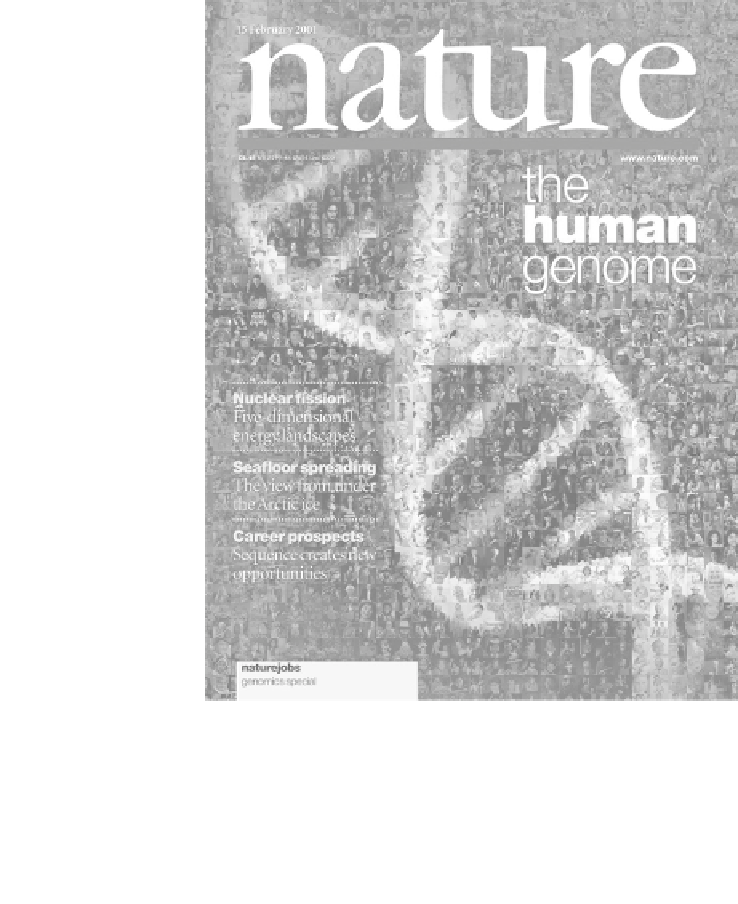Geoscience Reference
In-Depth Information
nature
15
February
2001
A
I , ;
w
^
www.nature.com
£5.45 eil>9frrS4 QM16 Uo .
jii 5 S
B I » E g I r
*
I B |
Pnllnillin
-....'..il.v :.......»......................................
Nuclear fission
Rve-dintar|siofi&i ■
energyiajicicape's
'f
.
Seat loor spreading
'rheviewfiwirurincfor
the Acetic jje » _• .
.........'■......V...*,.:.v.
Career prospects
Sequence creates rieW
opportunities - /T F!;?
naturejobs
genomics special
faces from around the world (reproduced with permission from
Nature
,15
February 2001)
This front cover image was used by
Nature
to mark the publication of the map of the human
genome. With the sorry history of state-sponsored eugenics in mind, the journal's editors made a
point of talking about
one
genome. They included images of phenotypically different humans who,
'under the skin', were implied to be members of a
single
biological family.
human genetics in the United States. There, particularly in the pre-1939 era,
the field of human biology actively participated in what are now regarded
as highly discriminatory measures against Americans of African descent
(among others).
In light of these two considerations, it's no surprise that researchers look-
ing for intra-genetic differences among
homo sapiens
have been insistent that
the variations sought are real, not contrived, let alone 'tainted' by social
assumptions about group difference. Let's take the subject of 'race' once
more. The post-1945 consensus, at least in Western social science, has been
that 'races' have no biological existence. They are instead taken to be groups

